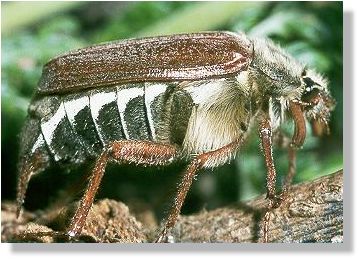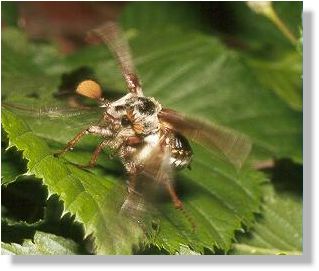| Probably the most
commonly known representative of the Dung Beetle and Chafers' family in central Europe is the Common Cockchafer or
Maybug (Melolontha
melolontha). In some European countries, its common name in addition
represents two similar, but much rarer species, so that three
different species altogether hide behind the same common name. It is
their Latin names though that identifies the species precisely.
Grown up insects feed on the foliage of a variety of deciduous trees and can be harmful to them, if the beetles occur in large populations. In the fifties and sixties of the past century, in central Europe the species was intensively fought by insecticides, that also harmed other insects and many birds. Since them, the periodical occurrence of large populations has ceded, and the species in some countries has become a protected rarity. |
 |
